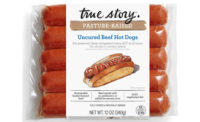A True Story
Barbara Young
byoung@stagnito.com
byoung@stagnito.com
It was well after dinnertime in traditional Chicago homes on Sunday, July 23. Evening was closing in on a glorious summer day that was to have included me watching the White Sox beat the Texas Rangers at the ballpark. However, one of those perennial traffic jams that define road travel in the Windy City got in the way, upsetting that particular plan.
I was able to watch the TV replay of Tiger Woods walking off the 18th green in tears after winning the British Open. I was about to settle in for a bit of pleasurable reading before bedtime when the phone rang.
“OK, so I am a freaky worried parent,” were the first words I heard. The atavistic fear in the voice of my longtime colleague was palpable. After apologizing for “bothering” me at home, and my repeated assurances that I felt no bother, her “worried mother question, beef related,” gushed forth concerning her toddler, who consumed less than a teaspoon full of raw ground beef.
“Given your experience and knowledge, how worried should I be?” she asked. “I feel like she [her baby] got into poison. Anything I can do in the meantime until I see she is OK?”
This is the story. She and her husband were preparing dinner together. He left a plate of uncooked hamburger patties within reach of their 20-month-old baby girl. The toddler helped herself to a pinch of the raw meat.
Now, my colleague is a journalist who also covers the meat industry, so she knows much about E. coli O157:H7. She also knows the food-safety benefits in the case-ready packaging concept. However, she prefers the meat her grocery store grinds in the backroom using leftover trimmings because it tastes better.
She knows the beef industry has done an outstanding job of combating that virulent strain of E.coli throughout the various links in the supply chain, but that does not preclude her intellect from warring with her emotions. This is her child for heaven’s sake.
“I think I know too much,” she says.
Turns out neither one of us knew as much as we thought.
In the end, a poison-control center call provided the acceptable information that sickness would have been immediate if the meat was contaminated. The baby was sleeping peacefully when my friend called me. This was predictable given the ensuing fuss in her home coupled with her mother’s fingers down her throat to make her vomit.
Interestingly, my colleague said she herself consumed raw hamburger meat as a child because she liked the taste. Her own mother worried about worms getting into her system. That was in the ‘70s, long before the designation of E. coli O157:H7 as a deadly foodborne threat.
The moral of this story is that emotions can override knowledge and judgment, but not always. If this were not so, Tiger Woods would not have risen above the pain of his dad’s recent death to keep a cool head under the pressure of his sport. Of course, there is no comparing a mother’s concern for her child’s health to an athlete’s winning aspirations.
Concerning foodborne pathogens, it seems scientific strides in eradicating their threat to the food we eat are not enough to allay predictable fears. How much more can the beef industry do to address consumers’ emotions concerning the safety of meat they consume?
I don’t know the answer, but I am convinced there are great minds on the case. I am herewith placing the matter in your capable hands.


